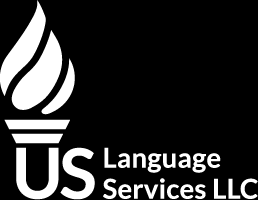How to Work in the U.S. As a Foreign-Educated Midwife

Working as a midwife is a fulfilling career for many, and this profession has its perks. Once you are established as a midwife in the United States, you are able to take advantage of benefits like great pay. According to the U.S. Bureau of Labor Statistics, nurse midwives make between $61,500 and $166,170 annually, with the average median wage being around $112,830 per year.
If you are a foreign-educated midwife wondering how to bring your practice to the U.S., you will need to complete several important steps. Our guide aims to help you understand this process and answer vital questions such as:
- What Is the Process for Working in the U.S. As a Foreign-Educated Midwife?
- How Much Does It Cost to Work as a Foreign-Educated Midwife in the U.S.?
- How Long Does It Take To Work as a Foreign-Educated Midwife in the U.S.?
- Are There Any Restrictions to Working as a Foreign-Educated Midwife in the U.S.?
- What Are the State-Specific Requirements for Foreign-Educated Midwives?
- What Are the Immigration Requirements for Foreign-Educated Midwives?
- Where Can I Get a Certified Translation?
What Is the Process for Working in the U.S. As a Foreign-Educated Midwife?
This process involves several different steps and requires midwives to obtain a license; licensing and specific requirements are handled on a state-by-state basis, so it’s important to choose the state you wish to work in and reference the licensing agency of that state for information that is more detailed to your situation. The steps for working in the U.S. as a foreign-educated midwife include the following:
- All midwives working in the United States must pass the American Midwifery Certification Board (AMCB) exam; to be eligible to take this exam, you must be a graduate of a midwifery educational program that is accredited by the Accreditation Council for Midwifery Education (ACME). In the case of foreign education, you will need to show your chosen program your foreign credentials and let them determine how many classes you need to take to obtain graduation status and become eligible for this exam.
Work with your chosen midwifery education program and submit a credential evaluation to the admissions board; the program may have a credential evaluation service that they prefer you use, or you might be able to use a service from either the National Association of Credential Evaluation Services (NACES) or the Association of International Credential Evaluators (AICE). Keep in mind you will most likely need a certified translation of your original documents as part of this process. - Once you have completed any education requirements needed, you will be able to register for and take the AMCB. You are allowed a limited number of retakes of this exam, and you will need to select between certified midwife (CM) or certified nurse midwife (CNM) certification. It’s important to note that CNM certification requires the individual to also be a registered nurse in their chosen state; you may need to go through the process of obtaining a nursing education in the U.S. or showing your foreign credentials depending on your career goals and specific situation.
- Some states require that individuals who gained the majority of their midwife education outside of the U.S. also complete the Test of English as a Foreign Language (TOEFL) or the International English Language Testing System (IELTS). You will submit your score from either of these tests along with your score from the AMCB exam as part of your licensing application.
- Every midwife working in the U.S. is required to be registered by the state that they are practicing in. This licensing is handled on a state-by-state basis, and you may be required to complete certain steps that are specific to your chosen jurisdiction. You should also be aware that some states require CMs or CNMs to practice under the supervision of a physician, and some allow individual practices.
- After you have met all of the basic education and examination requirements for state licensing and received your state license and AMCB certification, you will need to ensure you can easily immigrate to the U.S. to work. Midwives have a few different options of visa types and green cards to choose from, and you should consult with an immigration lawyer if you have any questions about this process.
How Much Does It Cost to Work as a Foreign-Educated Midwife in the U.S.?
The costs of working as a foreign-educated midwife in the U.S. include any education costs for classes you might need to take in the United States, the cost of the AMCB exam, which is approximately $500, and the cost of applying for state licensing, which is typically a few hundred dollars. You may also need to pay for continuing education credits per your state’s licensing requirements, recertification every few years with the AMCB, or other various licensing and practice fees.
Make sure that you also include the cost of a visa or green card in your estimate; these typically range from a few hundred to a few thousand dollars to complete, and this cost may increase if you consult an immigration lawyer for legal help.
How Long Does It Take To Work as a Foreign-Educated Midwife in the U.S.?
How long it takes for you to become a foreign-educated midwife depends on the education requirements of your state, how many classes you need to take, exam preparation for the AMCB which takes a few months on average, and other state licensing requirements you might need to meet.
In general, this process will take at least a year or two, and you will also need to factor in the time that it takes to obtain a visa or green card. Depending on your situation, a visa or green card application could take between 13 and 24 months to process.
Overall, expect to put aside between 2 and 4 years to fully complete this process.
Are There Any Restrictions to Working as a Foreign-Educated Midwife in the U.S.?
In general, there are no restrictions to working as a foreign-educated midwife in the U.S. once you have obtained all of the proper education and state licensing needed. Most licensed CNMs or CMs are allowed to practice alone and administer their services individually, but some states require that a licensed physician supervises a midwife’s practice. Make sure to check with your state to determine if this will be the case for you.
You should also note that ongoing education and license renewal requirements might be required by your state and that you may need to meet visa and immigration requirements to continue your practice in the U.S. unhindered.
What Are the State-Specific Requirements for Foreign-Educated Midwives?
Midwife licensing is handled on a state-by-state basis, and there are varying requirements that you might need to meet to be eligible for a license. Most states individually determine how much education from an accredited U.S. midwifery education program is needed to be eligible to take the AMCB certification exam, so you should consult with your state licensing board as one of the first steps of this process.
It’s important to take note of whether your chosen state also requires certified midwives to be registered nurses, as this will be a separate process to either obtain education or show your foreign education credentials.
Many states will also require that certified midwives or certified nurse midwives take state-specific ethics and law exams and submit licensing applications with certain fees. Your chosen state will regulate whether or not certified midwives are allowed to practice individually or under the supervision of a physician, which is important to figure out early on in this process.
What Are the Immigration Requirements for Foreign-Educated Midwives?
Individuals who are interested in immigrating to the U.S. as midwives have a few different visa options to choose from. In general, midwives are grouped into the ‘nursing’ category of immigration, and the visas you may be eligible for are those that are typically reserved for healthcare professionals.
Foreign-educated midwives may be able to obtain student visas if they are studying in the U.S., or they may be eligible for the H-1B visa for specialty occupations. Employment-based visas might be an option depending on your specific situation, and in some cases, midwives might also be able to apply directly for a green card.
Make sure that you consult with an immigration lawyer if you have questions about the immigration process or what the best immigration option for your situation is.
Where Can I Get a Certified Translation?
Certified translations of your official, original documents are an essential part of the process when it comes to working in the U.S. as a foreign-educated midwife. You may need certified translations of vital documents to obtain credential evaluations, apply for state licensing, and as part of your visa or green card applications. At our online store, you can receive reliable certified translations of any of your important documents including:
- Diplomas
- Academic transcripts
- Business licenses and certifications
- Resumes and employment records
- Birth certificates
Guaranteed Acceptance
All our certified to English translations are accepted by the USCIS. Our translations follow the guidelines established by the USCIS and are also accepted by educational institutions.
Most Requested Documents
FAQs
You can order most translations 24 hours a day, 7 days a week through our online store. For large projects (more than 20,000 words or 50 pages), please request a quote.


